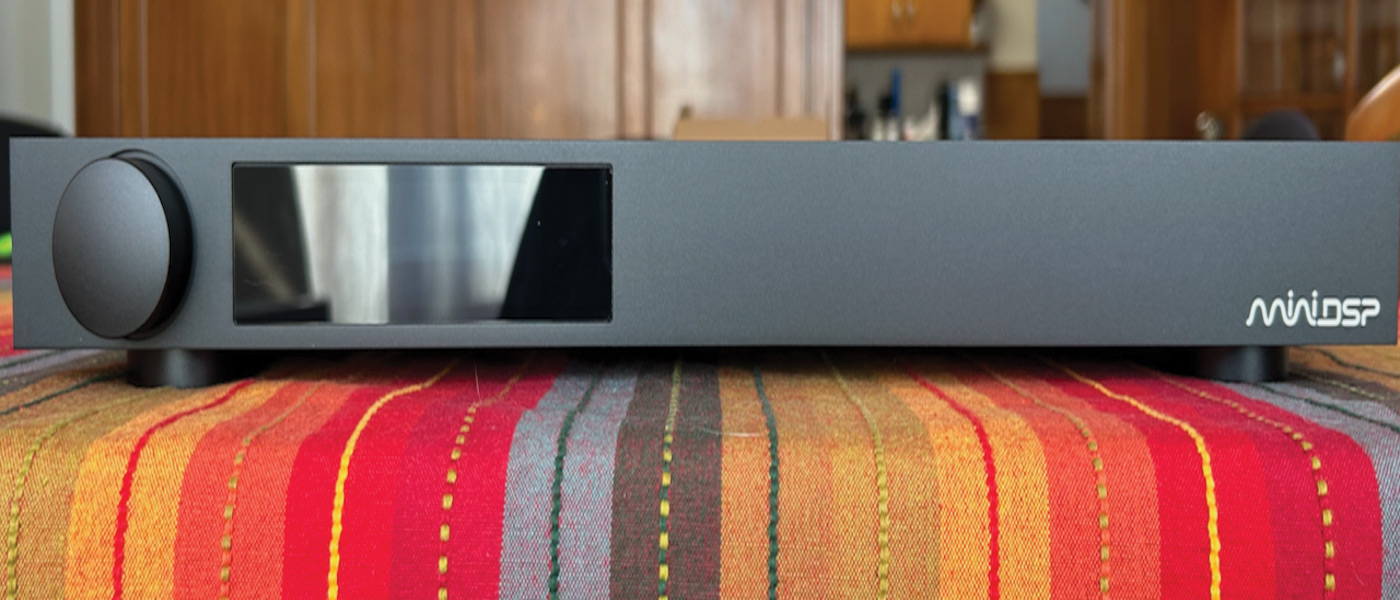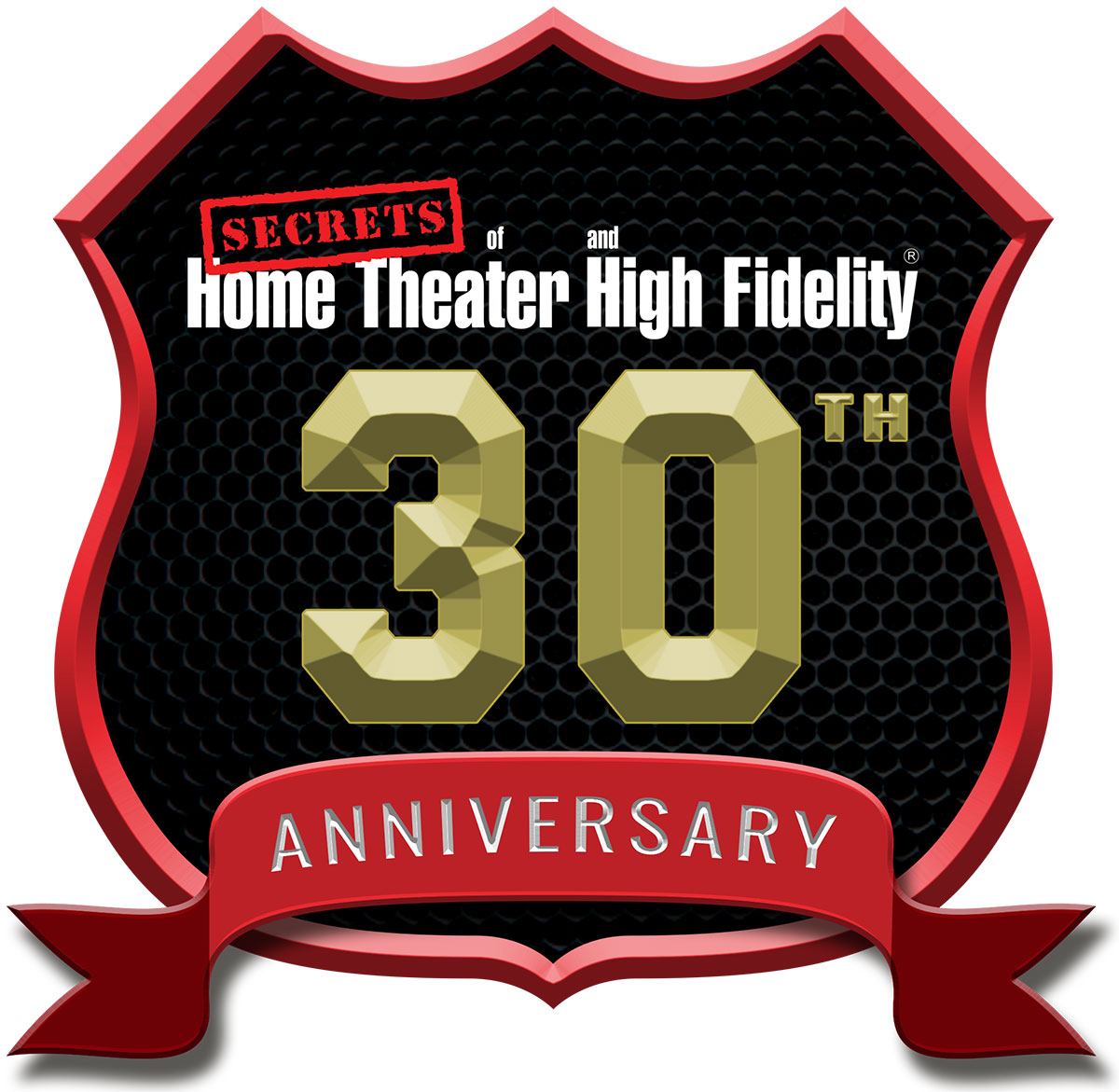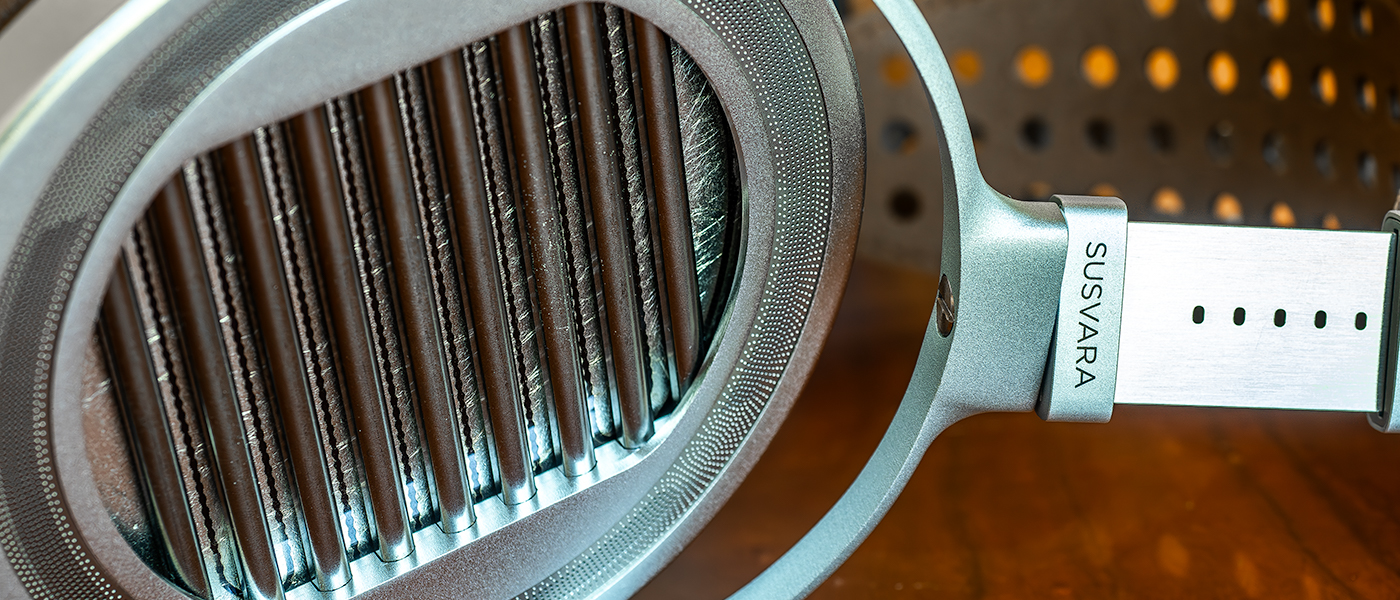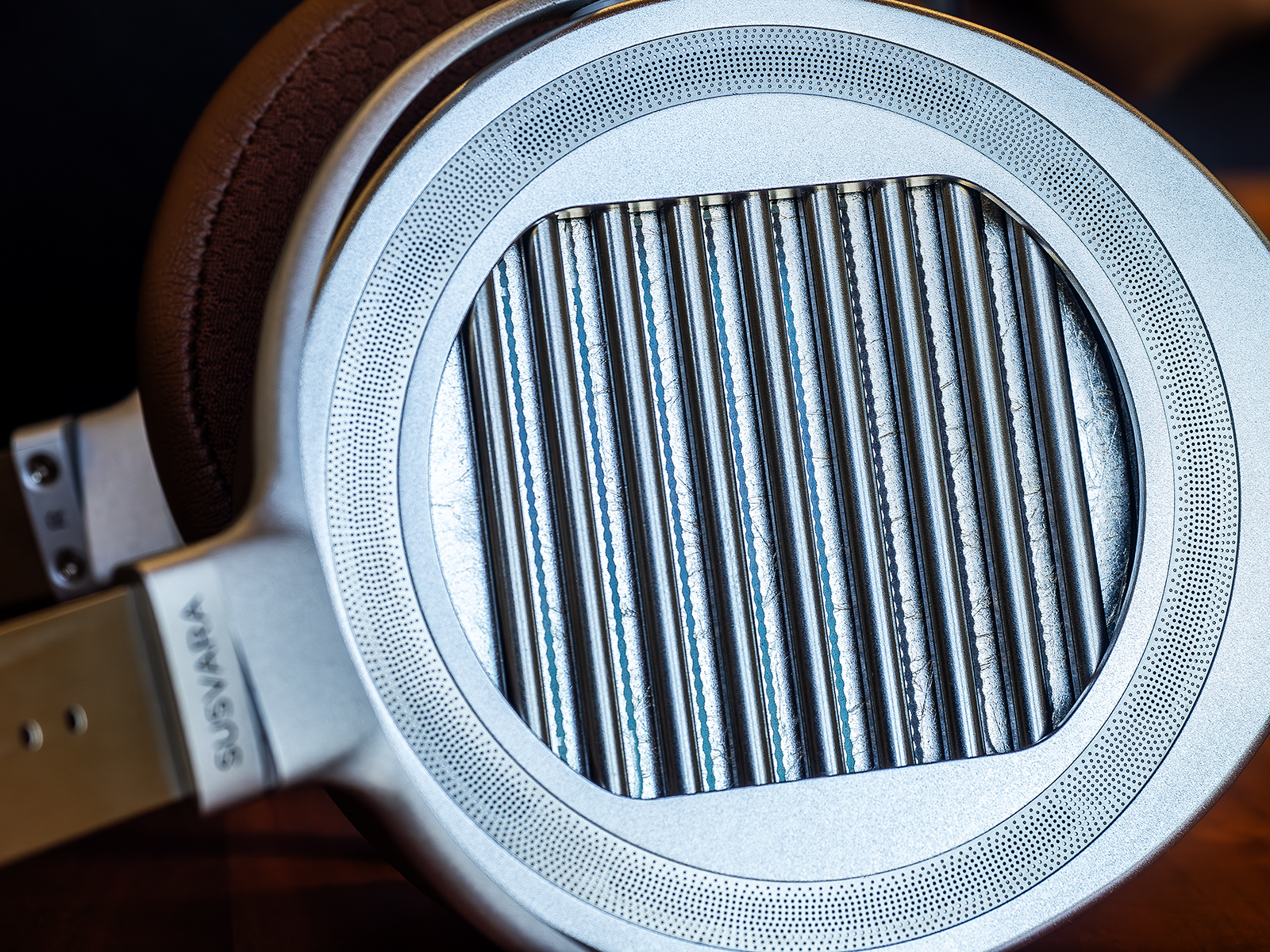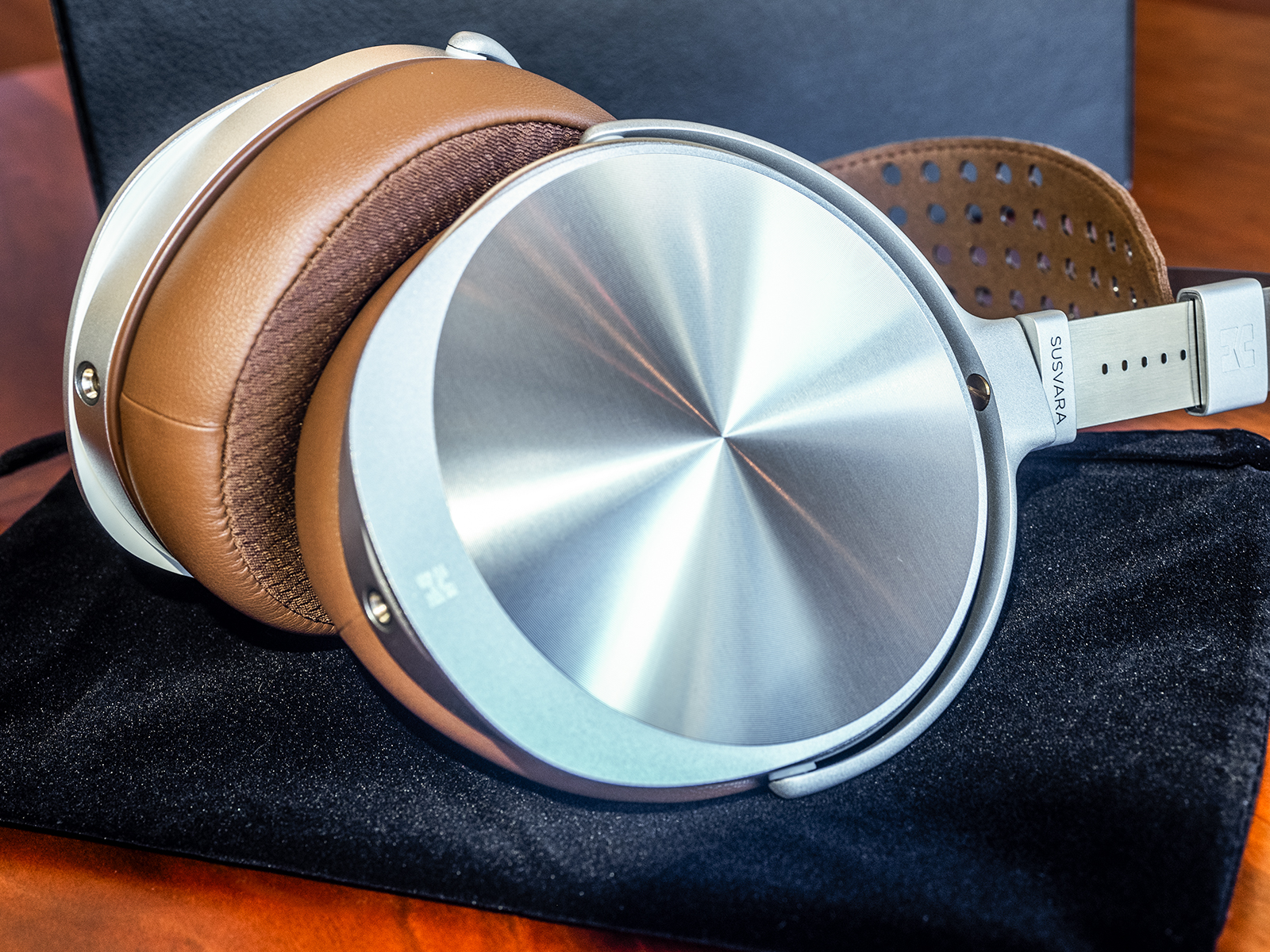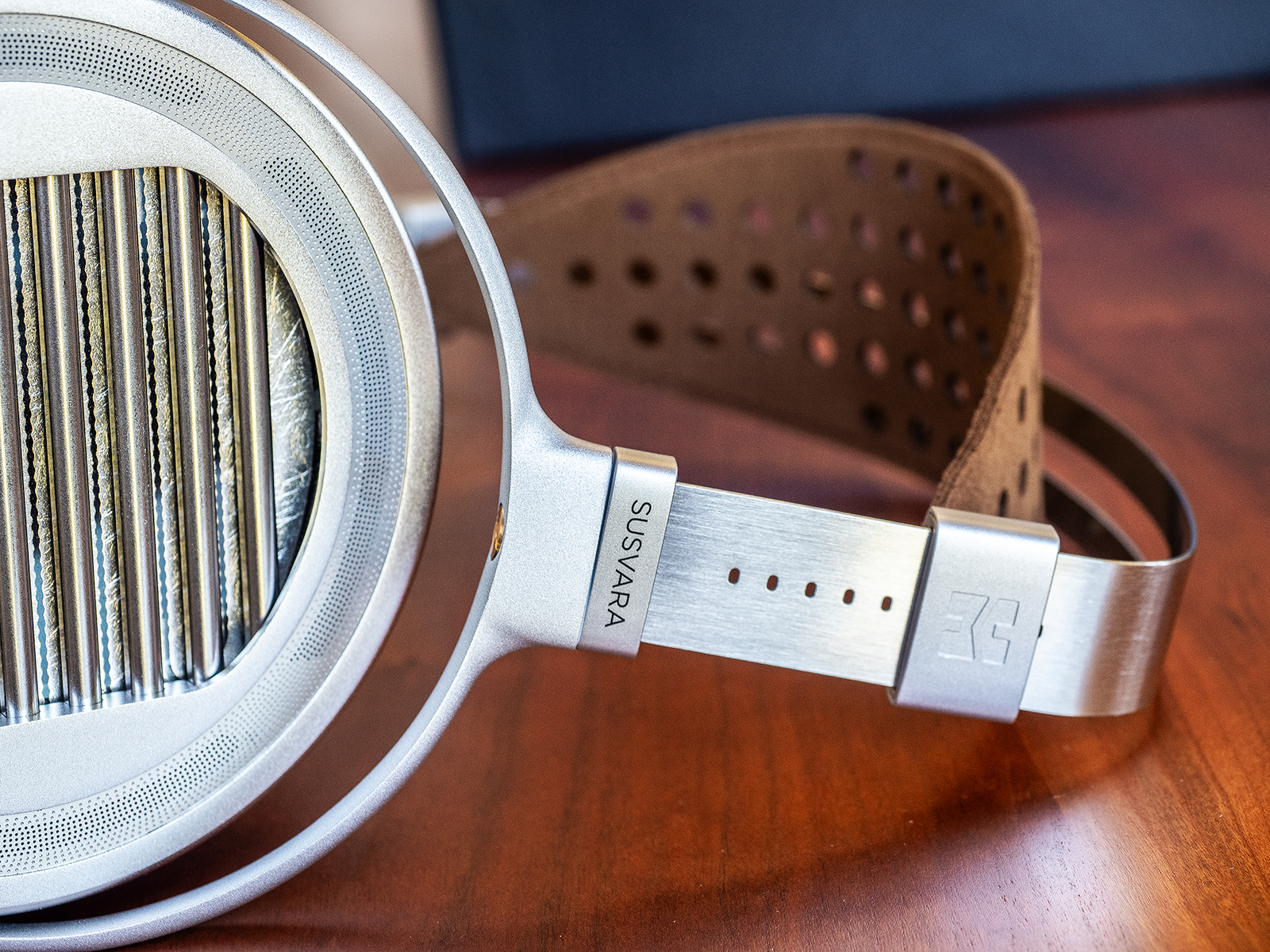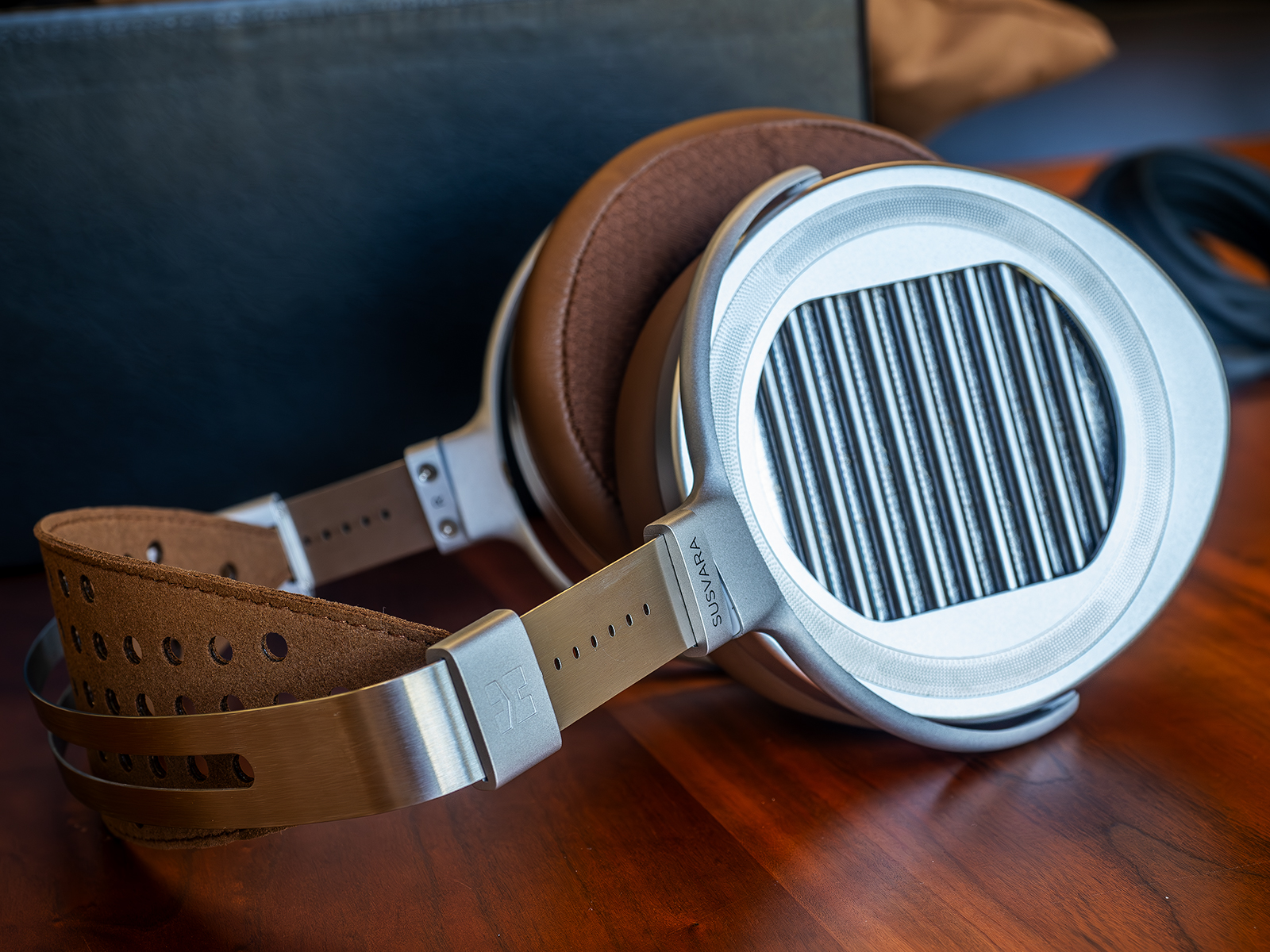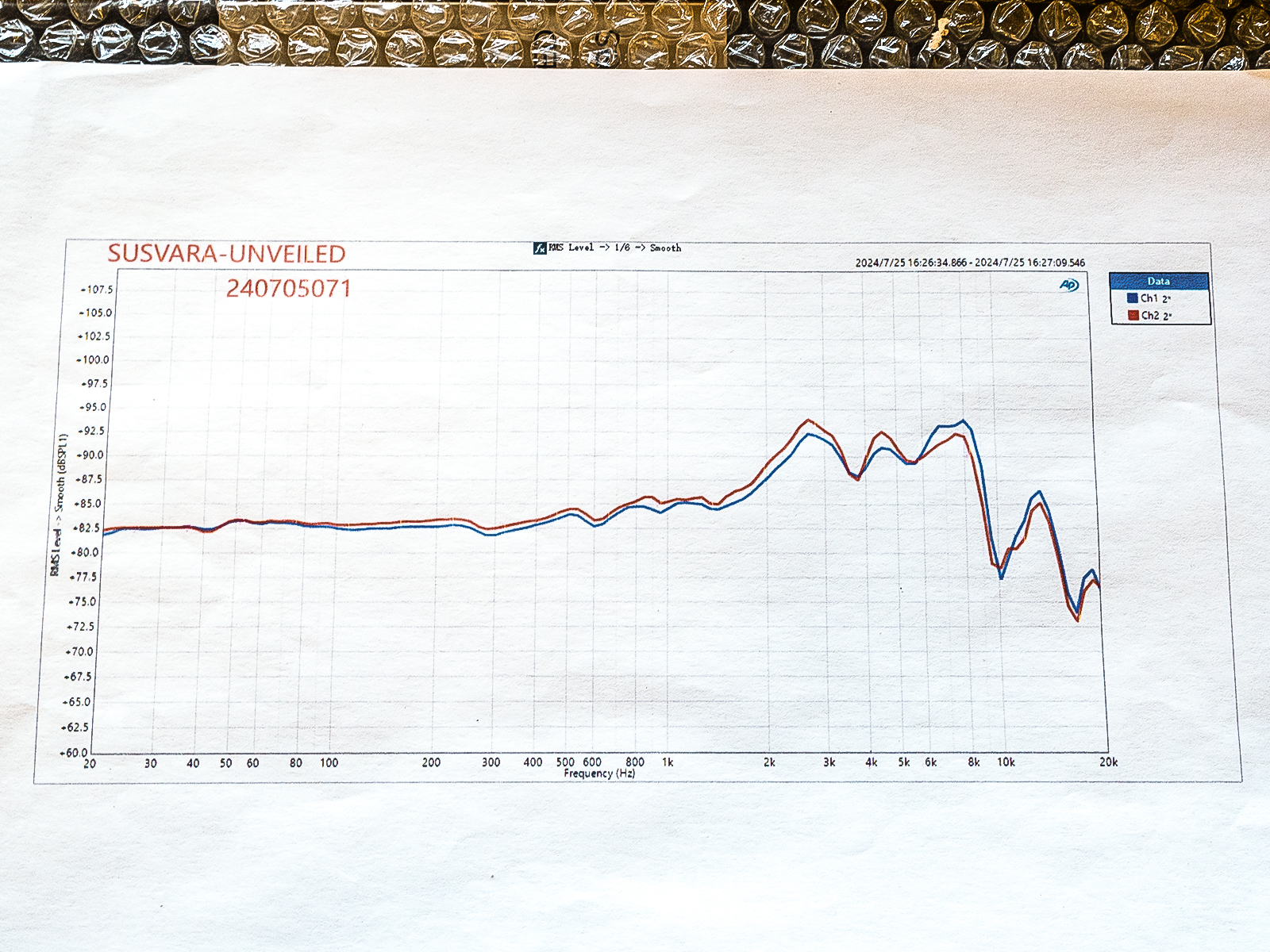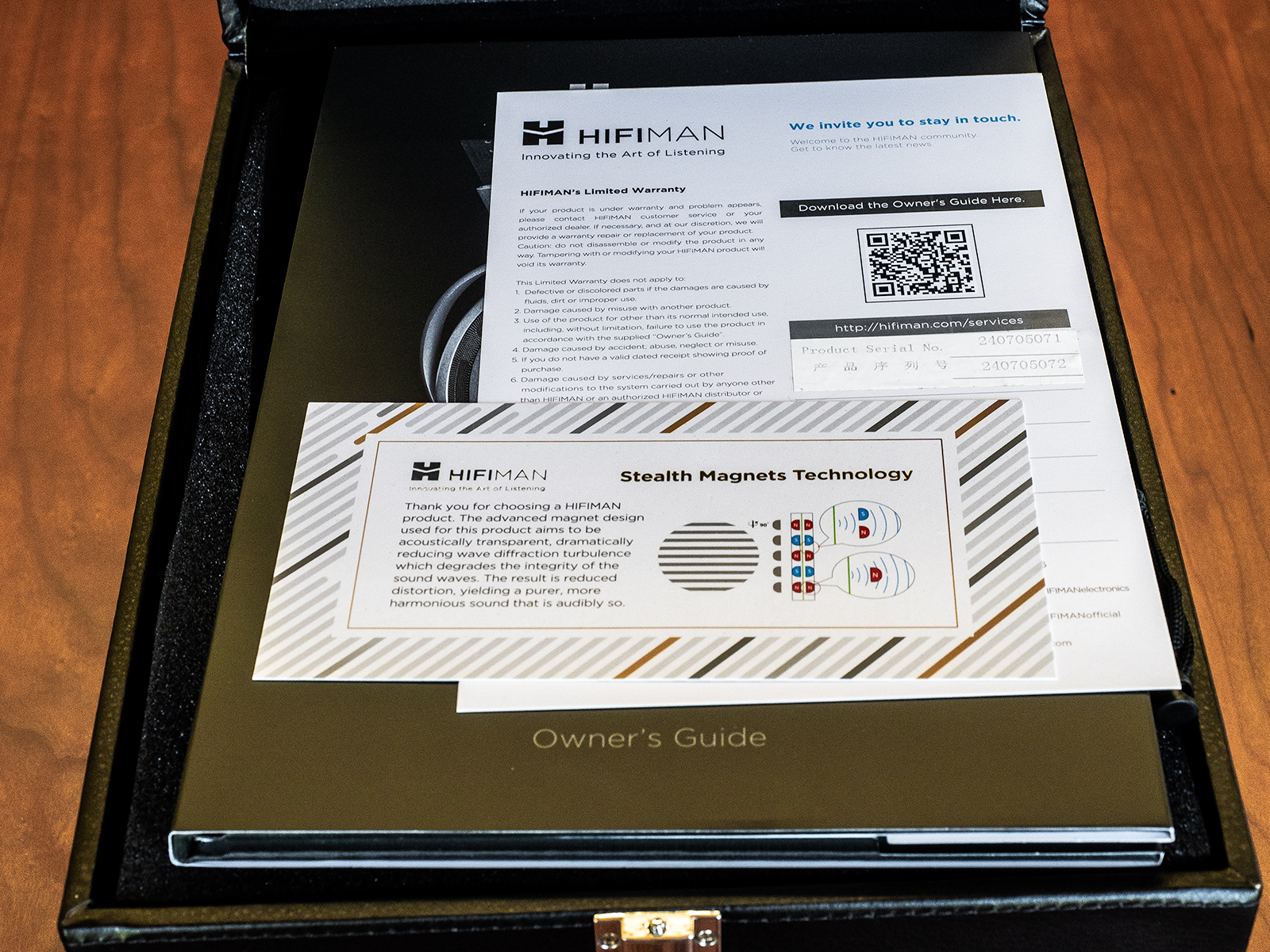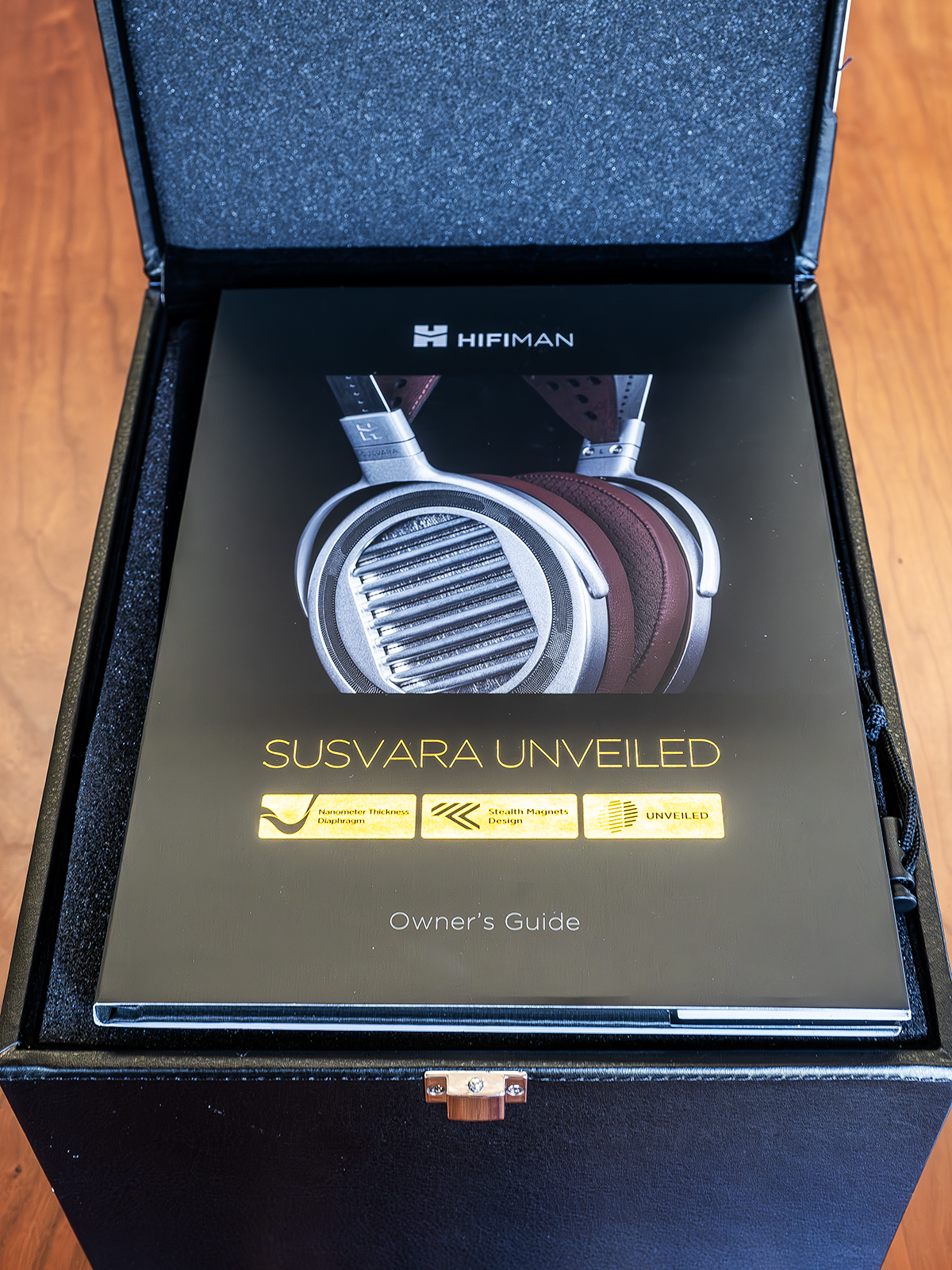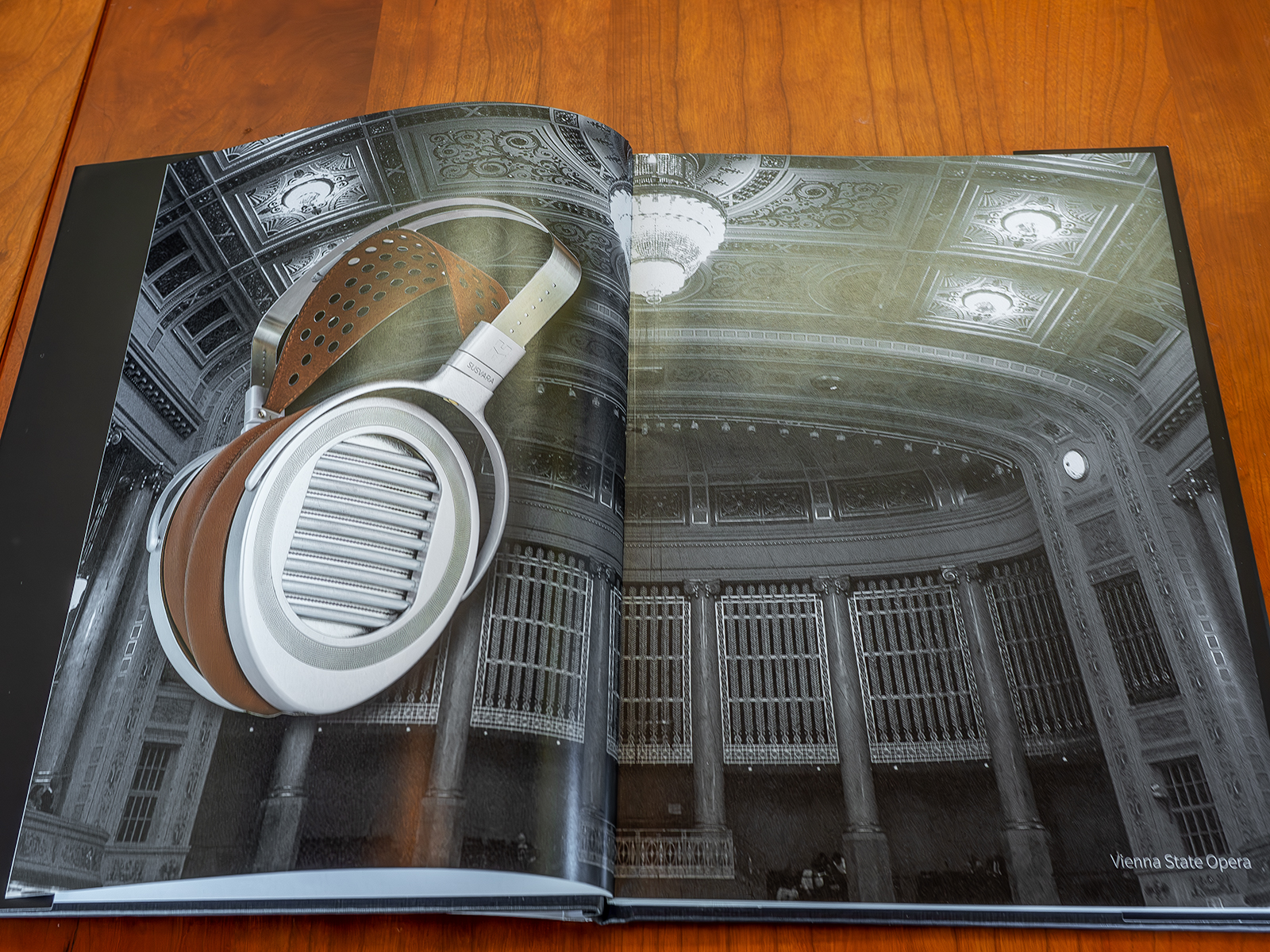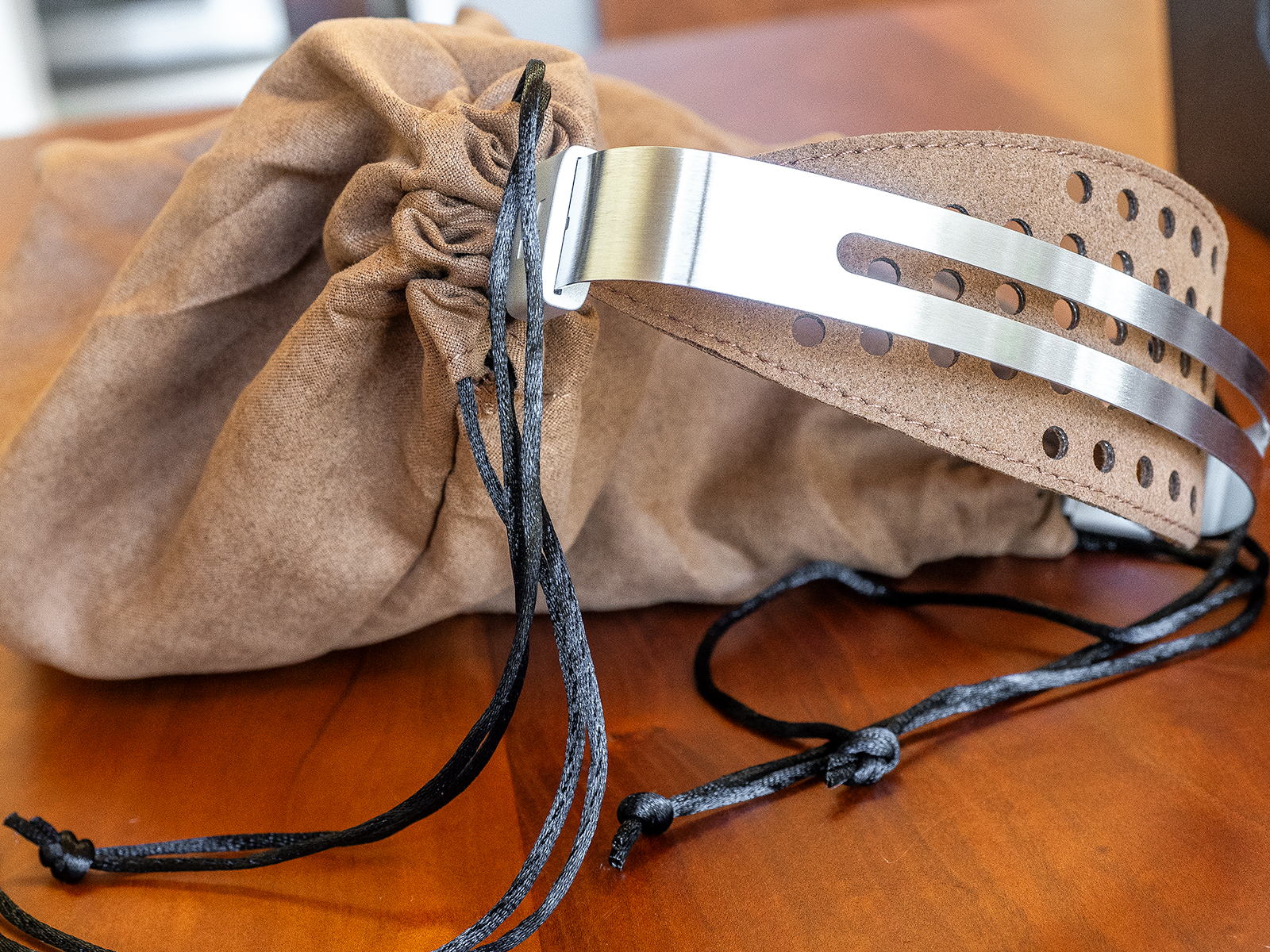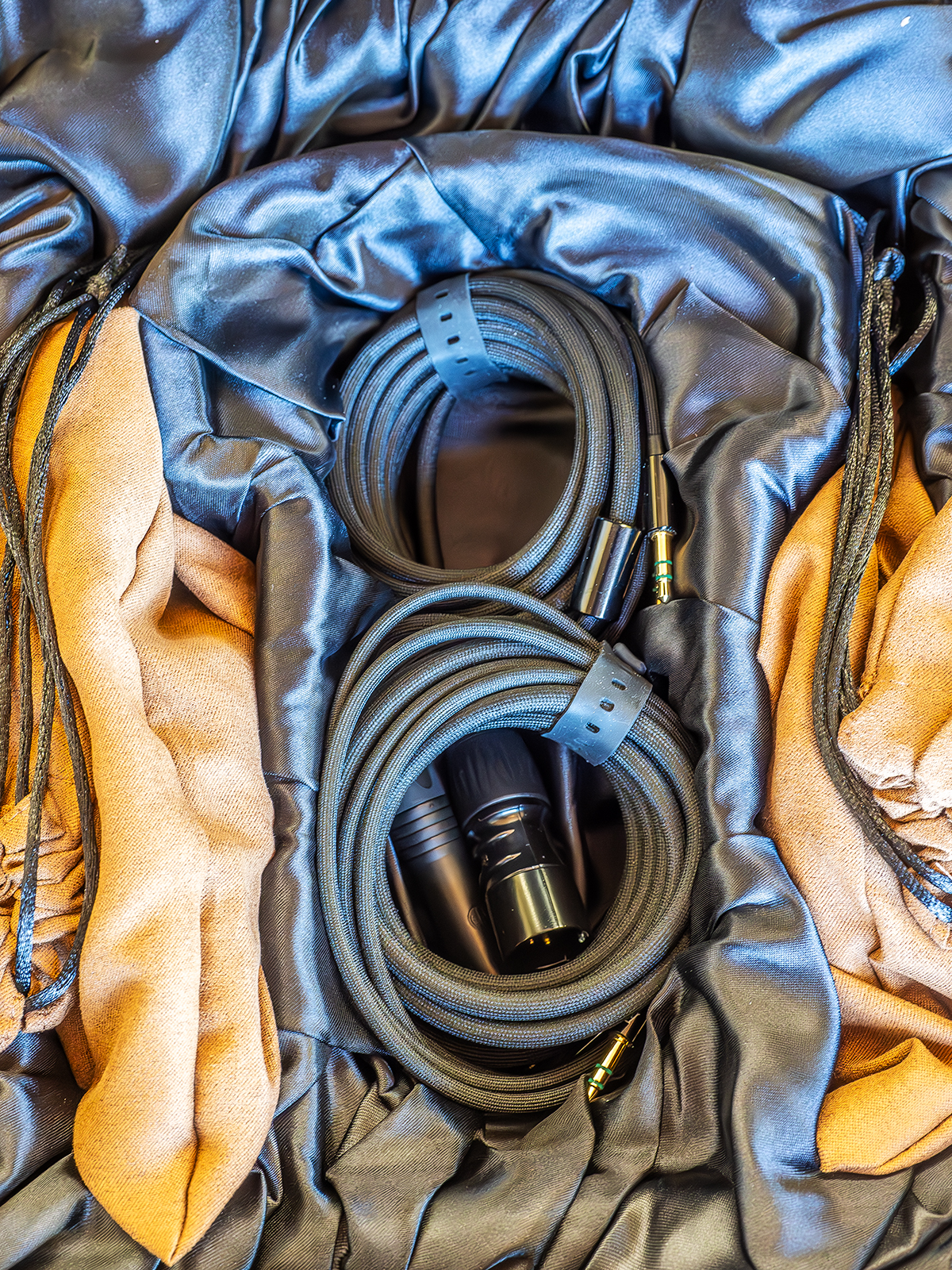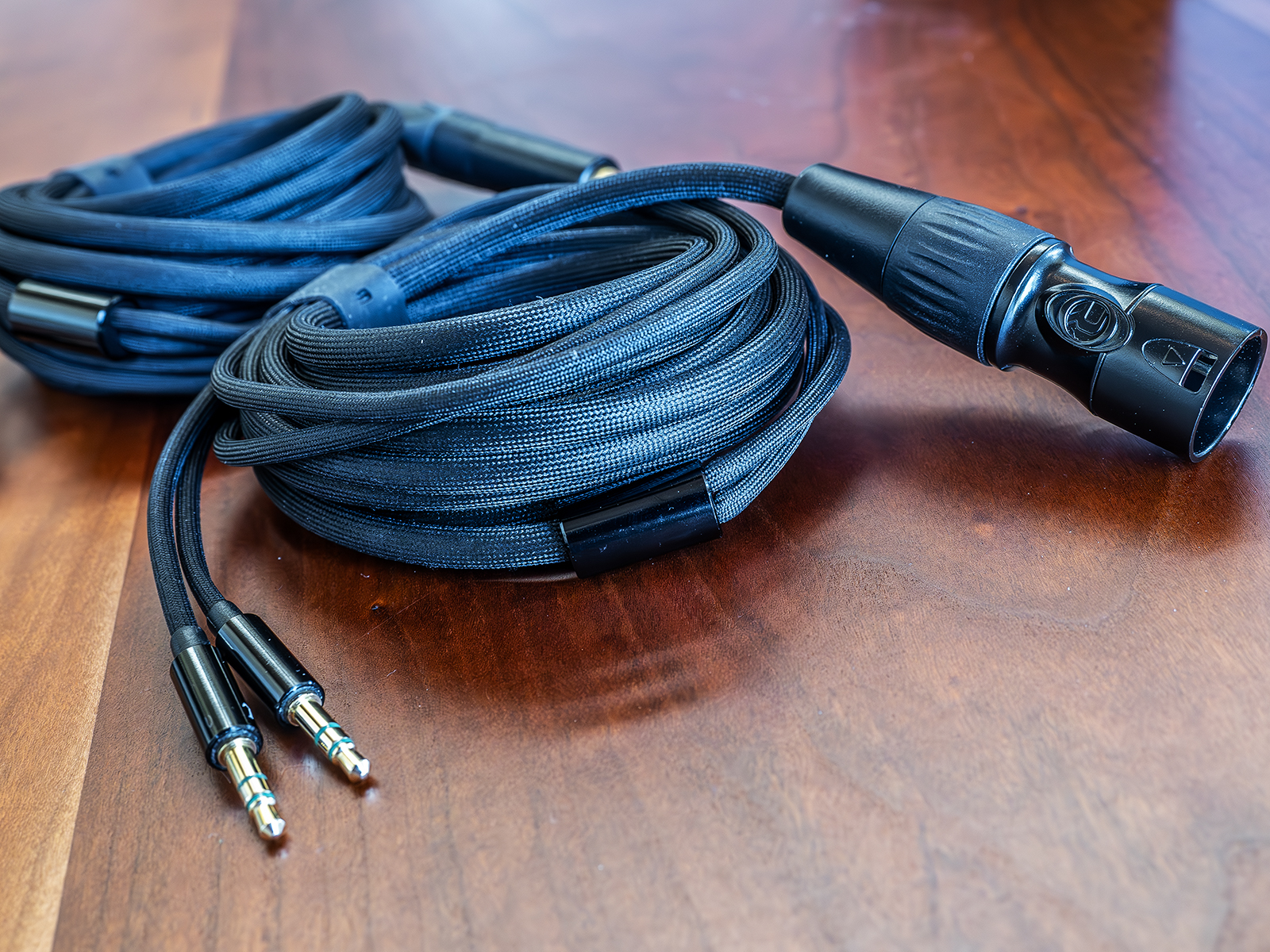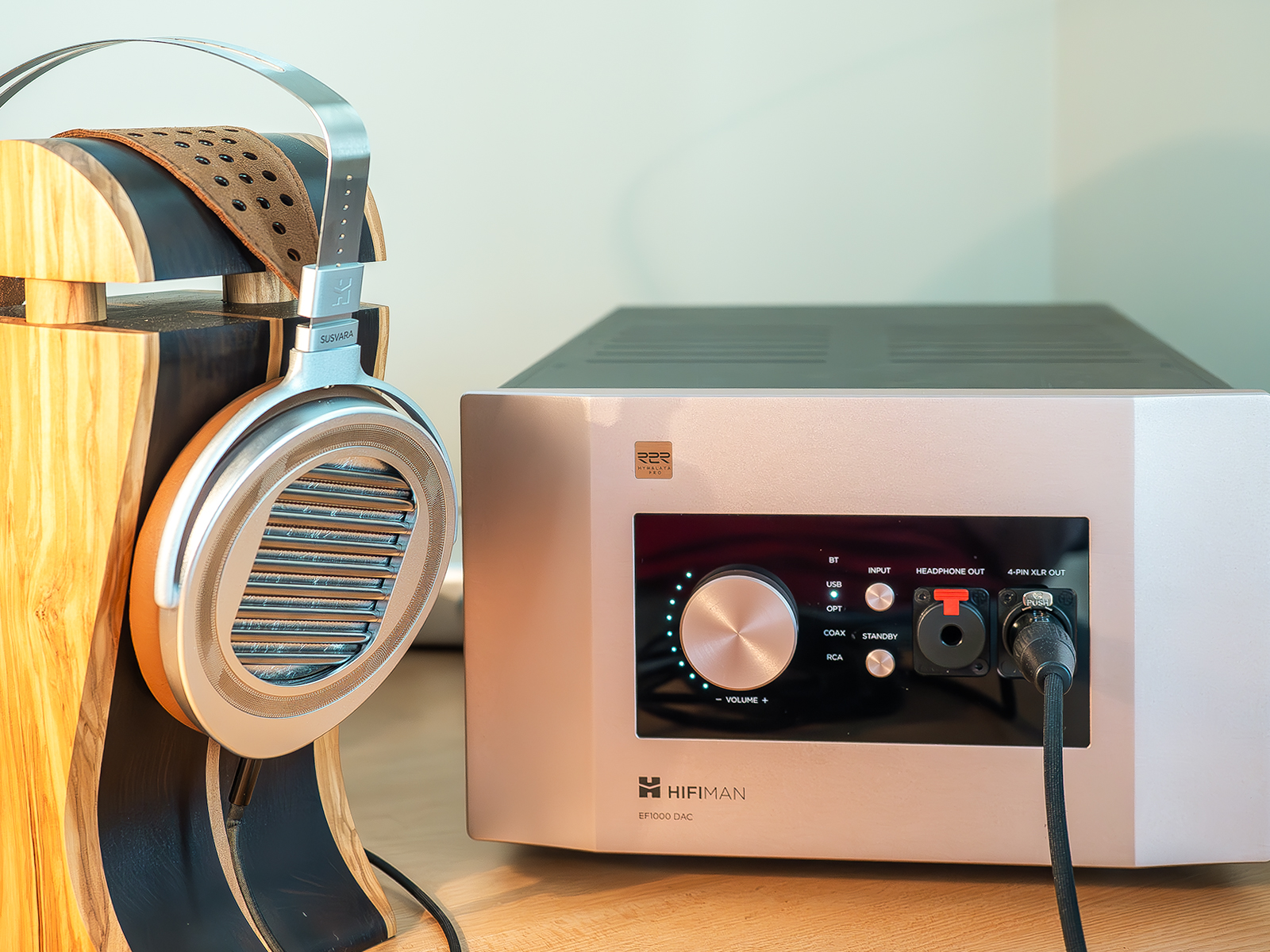This is true for every model except its flagship model, the Susvara. Though introduced in early 2017, it has remained untouched. There has been something of a mythology around this; many fans say that this flagship planar was at the pinnacle of refinement, and any improvement would simply be gilding the lily. However, it was rumored that Dr. Fang Bian, the CEO and founder of HIFIMAN had plans to continue developing the Susvara but would only update the model if there was a genuine improvement in sound. Well, that time is now. At the Munich High-End Show 2024, a pre-release version of this new Susvara called the Susvara Unveiled, was, well…. unveiled for a select group of industry professionals. Some writers who attended the show wrote about their favorite new products, including a group who reported that their “best of show” choice was something they couldn’t talk about since it was still embargoed. In June 2024, the embargo was lifted and the Susvara Unveiled was officially presented to the head-fi world. This August I was offered the chance to spend time with the Susvara Unveiled as well as the HIFIMAN amplifier designed for it, the top-of-the-line EF1000 DAC/amplifier, a class AB desktop amplifier that features the proprietary Himalaya Pro Ladder DAC.
The original Susvara is a reference planar magnetic headphone that is considered one of the best-sounding headphones available. The reverence for the Susvara is legendary. At $6000.00 it sat in the rarified company of the best of the best, even matching the best electrostatic headphones for its ability to reveal every bit of detail a recording has to offer. However, its impedance of 60Ω and a sensitivity rating of 83 dB made it one of the hardest headphones to drive with enough power to bring out all the Susvara had to offer, and it wasn’t uncommon for them to be driven with speaker amps. HIFIMAN developed the EF1000 to drive them; a two- box system with the amplifier in one box and the DAC in the other.
Planar magnetic headphones work by having a thin diaphragm with a conductor coil printed on its surface. The diaphragm is suspended between magnets that have openings such that the sound can emerge for your ears to hear it.
The Susvara Unveiled has a silver conductor layer on the diaphragm, which has high conductivity compared to the original gold layer, thus reducing the impedance by 15 ohms and increasing the sensitivity by 3dB, which still requires some serious power to drive at its best but gives many more options for amplifiers. In addition to the powerful HIFIMAN EF1000 DAC/amplifier which, at 13.7 watts of output, has so much power I seldom had to turn up the volume past the 11:00 o’clock position on the dial, I listened to them with every amplifier I had, including the Earmen Colibri portable DAC/amp plugged into my iPhone; more on that later.
Though the Susvara Unveiled shares its form factor and looks with the original, there is one huge difference; the protective window shade grills have been removed; meaning nothing is blocking (or protecting) the drivers, which provides for a more open and airy sound, minus any refraction or distortion that even well- engineered grills will produce to some degree. The headphones come with metal magnetic covers that are placed over the exposed drivers when the headphones aren’t being used.
HIFIMAN Susvara Unveiled Headphone Highlights
- Microscopic detail.
- A three-dimensional soundstage that puts you in the music.
- Powerful, precise dynamics with ultra-fast response.
- Airy and clear; no distortion or blurring, even at high volume.
- Natural timbre as close to real as any headphones I’ve heard.
- Well-built and beautiful; simple silver metal and medium brown pleather pads and headband; HIFIMAN leaves the dazzle for the sound, not for the looks.
- A headphone adjustment that fits my smaller head size; something missing in most headphones I’ve tried.
- Rumbling bass, strong mids, and sparkling highs. Vocals are extraordinary.
- Clamping force feels just right, and comfortable for hours of listening.
When I was asked if I would like to review the HIFIMAN Susvara Unveiled, I was thrilled. In my brief one year of reviewing headphones, I have had the delight of getting to audition some of the upper tier of various manufacturers. High-quality audio is pretty much a given at the mid-fi and high-fi levels of all the headphones I’ve reviewed. Yet, shimmering out on the horizon has been, what for me, has been a mythic headphone; the HIFIMAN state-of-the-art planar magnetic Susvara. I’d never listened to it, not even the HIFIMAN He1000 series, which was the top tier HIFIMAN had to offer before the Susvara. I love planar magnetic headphones, and for my personal use, they are what I often listen to, and I have a real fondness for the HIFIMAN Arya Organic (and at the time I reviewed them, it was hard to imagine music sounding any better). I’ve since listened to more dynamic driver headphones and earphones, and I love the bass punch and sound isolation they excel in, but the transparency of open-back headphones is still what I resonate with for private listening sessions.
When I had the opportunity to review two different models of STAX electrostatic headphones, the SRS-x1000 and the SR-L500-mk2, my world was changed again by my exposure to the world of ethereal highs, transparency and fast, detail-driven audio that made my beloved planars sound thick in comparison. Unfortunately, at this stage of my audio life, I don’t have the budget or room to include an entire separate amplifier/headphone system on my desk. I’m happy to stay with the warmth and detail of the planars I listen to and put that pristine sound of electrostatics on my wish list.
And then I listened to the Susvara Unveiled for the first time and my mind was blown. Not having heard the Susvara OG (originals, as folks refer to them), I can’t compare the two, and the closest I can do any comparison to is the electrostatic headphones I’ve heard. At the heart of both models of the Susvara is the driver technology that features ultra-thin and light diaphragms surrounded by what HIFIMAN refers to as “Stealth magnetics” on both sides. The magnets are called Stealth because they have been shaped in such a way as to make them as acoustically invisible as possible. This technology has now been put into the latest generations of many of the other models of planars HIFIMAN offers. The large and almost lighter-than-air diaphragm (“less than a millionth of a meter thick and extremely low mass” to quote HIFIMAN) produces sonically accurate and fast responses, much like the diaphragms of electrostatics. The Susvara had the speed, transparency, and detail I loved about the electrostatic headphones, but had richer and warmer mids and low-end.
Frequency Response:
6Hz-75kHz
Sensitivity:
86dB
Impedance:
45Ω
Weight:
430g (excluding Magnetic Veils and headphone cable)
MSRP:
$8,000.00
Company:
SECRETS Tags:
HIFIMAN, Susvara, Unveiled, Headphone, EF1000, DAC/Amp
Max Power Output:
13.7 W@32Ω balanced
THD+N (Line Out):
0.0012% (-8dB)
Channel Separation:
131dB.
Signal to Noise Ratio:
120dB (A-weighted)
Audio Codecs:
AAC/SCB/aptX/aptX-HD/LDAC
Dimensions:
15.5”x11.02×6.8”
Weight:
28.66 lbs.
MSRP:
$15,000.00
Secrets Sponsor
The Susvara Unveiled shares much of its structure with its predecessor and other HIFIMAN planar headphones. However, each pair of these headphones are hand hand-assembled with multiple quality inspections by engineers with more than 10 years of experience. The headband is a structural head beam formed into a dual-band that is light and comfortable. It consists of a CNC (computer numerical control) milled hand-polished composite metal alloy; there are no sharp edges, and the headband strap is sueded perforated pleather, which looks so real I had to reach out to HIFIMAN and ask if the material is genuine leather. The response was that it is all pleather, as they don’t use animal products. I found the headband strap to be very comfortable and cool. It distributes the weight of the headphones quite well and makes listening for extended sessions effortless. The strap is quite adjustable, and it shares the same click settings as the other HIFIMAN models. There are plenty of closely spaced holes for the size adjustments which means it is easy to fine-tune the proper position of the earpads on various head sizes, my smaller head size included, which is a treat. No socks wrapped around the headband on these!
The replaceable oval pads are asymmetrical, thinner at the top, and the edges of the pads are slightly beveled which distributes the weight evenly, while providing a gentle seal around the ears. The cups swivel for a good fit, but don’t swivel enough to lay flat (with good reason…). The clamping force is subtle yet secure and the pads allow eyeglasses to be worn easily. Like the weight distribution of the headband, all these details allow for hours of listening, at least for my ear shape. Your ear mileage may vary…
The pads and headband are a tan, saddle leather color that I think is handsome, especially combined with the silver satin finish of the frames. The wood veneer of the previous generation is gone, giving, what is, in my opinion, a classy, understated look. As I mentioned before, the bling is in the sound, not the appearance.
The original Susvara has a metal “window shade” grill over the driver, much like on their other planars. Though the grills protected the driver, it was felt that as carefully designed as the grills were, they still reflected some sound waves back to the very sensitive and responsive diaphragm. So, for the Unveiled, the outer grills have been removed, thus eliminating a possible source of diffraction. What looks like grill work are the magnets themselves. HIFIMAN provides metal magnetic covers called Magnetic Veils to attach when not using the headphones. I needed to practice getting the covers on smoothly, as the magnetic pull is not very strong, and they fall off easily, but once I did, it became second nature. I was so unnerved by having such vulnerable headphones on my desk that I cleared away all loose paper clips and anything sharp before I took the covers off. There are two soft cotton pouches to place the covers in when not in use. Honestly, I have mixed feelings about this bold design choice Dr. Bian has taken. On the one hand, the “unveiled” sonics of these headphones are unmatched, as there is nothing else on the market like them. On the other hand, not everyone is careful with their gear, and, though I hope the drivers are less fragile than they look, I can picture some careless moment resulting in a tear or small hole in the butterfly-wing-fragile diaphragm. I haven’t inquired about what sort of repair program is offered, but I would guess there is a system in place, given these headphones will likely stay in collections for years.
The Susvara Unveiled arrived in a large rather battered cardboard box. However, not to worry, as the pleather-covered presentation box was well protected with layers of foam and a fitted bubble wrap jacket. Inside was a sumptuous presentation. Placed on top, was the personalized frequency response chart showing the actual test of the drivers before packing, and the usual paperwork, including a warranty card that lists serial numbers for each driver. They come with a three-year warranty, plus 6 extra months after they are registered with HIFIMAN. Finally, a hardcover owner’s guide, which is really a beautiful coffee table book that tells the story of the Susvara Unveiled (which is also available online).
Tucked under all this were four soft cloth bags, two smaller ones for storing the Magnetic Veils when not in use, and two larger bags that fit around the earcups.
In addition, there is a larger velvet bag for storing the headphones. Continuing down there is a foam cover that lets you know there are cables underneath. There are two black-cloth covered 3m, 4-pin XLR, and 6.35mm single-ended terminated cables. Both have standard dual 3.5mm TRS connectors. All the plugs are gold-plated. The cables are a combination of single crystalline copper paired with single crystalline silver wire.
Alongside the cables was a quality-control card showing they had been inspected.
The EF1000 DAC arrived separately in a huge, heavy cardboard box. Inside was a humungous hard-sided wheeled travel case with a collapsible handle. I’m guessing the case weighs at least 30 lbs., and the amplifier itself weighs over 28 lbs. so this is one big box!
The EF1000 DAC was on loan, not to be reviewed, but simply to provide me with the opportunity to listen to the Susvara Unveiled with the DAC/Amp designed for the demanding nature of the series. This is the update to the original EF1000 and has several new features. It has HIFIMAN’s ultra-precise Discrete Op-amp at the input stage which functions at a high voltage (26 V), with an output of 12 V at 0.0003% THD and output impedance measured at 100 ohms.
It has quad-matched transistors in each channel, in the fully balanced 13.7-watt output stage. It includes four input options: USB, optical, coaxial, and RCA. In addition, it can stream LDAC and Apt-X HD Bluetooth. Outputs on the front panel include 4-pin XLR and 6.5mm, while RCA single-ended and balanced XLR outputs are on the back panel. It is NOS/OS (non-oversampling, oversampling) selectable.
The DAC is the Himalaya R2R DAC, which has an SNR of 120dB, minimum THD of 0.0012%(-8dB), THD(-60dB) and channel separation of 131±3dB.
I also listened to the Susvara Unveiled with the Pass Labs HPA-1 class A headphone amplifier, which has an output of 3.5 watts at 20Ω, connected with Claris RCA cables to the Topping DX7Pro, which provided the DAC function. I used the HIFIMAN single-ended cable as that is the only output the HPA-1 has. The DX7Pro uses the ES9038PRO DAC chip, which gave me my first comparison between a Delta-Sigma DAC and the R2R ladder DAC. The music “streamer” was my M2 MacBook Pro connected with the same USB-B connection I use with the EF1000 DAC. I think my next set of lessons is going to be understanding a bit more about DACS. I know that there are debates in the audiophile communities about Delta-Sigma vs R2R ladder DACS. I will say, there was a difference in how music sounded, but was it the DAC or the amplifier, or the synergy between them? The Pass Labs is a beautiful amplifier, and even though it is solid state, it has a slight warmth to the neutral output which is lovely. I’ve always enjoyed the Topping/Pass Labs combo, and the Pass Labs has plenty of power to spare, until now…Where the EF1000 was almost too loud at 11 o’clock on the dial, the HPA-1 was close to maxed out at its 4 o’clock position. However, it still sounded great, with no distortion or degradation in sound. The music did lose some of the transparency, detail, and magic. I think this showed that the power requirement of the Susvara Unveiled, even though much easier to drive than the original, needs lots of power to bring out the dynamics not just to get more volume. I also listened to the Topping, on its own, using the XLR cable, and it had plenty of power to drive the headphones with more volume than I needed, but again it lost some of that magical extra 3-D space. I think that the R2R DAC seems more “musical”, rounded, and rich, but again, without having the same power source for both, I’m only guessing. The bottom line, however, it shows the Susvara Unveiled can be played well on a wide variety of amplifiers.
Finally, the fun test. My iPhone connected to the Earmen Colibri portable battery-powered DAC/amp. This also has an ESS DAC, and I connected the Susvara using an Audiophile Ninja 4.4mm balanced copper cable to the 3V balanced output of the Colibri. I was impressed. The volume was more than I wanted, and I was probably at about 2/3rds output. That was the good news. However, the Susvara became a very nice headphone rather than the extraordinary one it can be. That’s good, though, because it showed me that this can be a portable headphone to take out of my office to enjoy somewhere else in the house, or even to pack up (carefully) to travel with and enjoy at a different location. But clearly, the winning combination is with the EF1000 DAC, which almost makes me sad because now I realize that amplifiers and DACs really matter. I think the HPA-1 is stellar and fine for probably 95% of whatever I’ll be listening to, though I fear I might be starting down the audiophile rabbit hole…
This was a difficult section for me to write about. Usually, when I review headphones, I start with a large selection of well-recorded songs, some of which are reference songs I listen to with all headphones so I can note the differences from one headphone to another. I push the selection of music beyond my preferences to experience the entire dynamic range of the headphones. Usually, it is an orderly process of winnowing down the choices to 4 or 5 songs that I will write about. That has been almost impossible with this headphone and amplifier combination. I couldn’t stop finding more music to listen to. I was like a woman possessed.
The Susvara Unveiled took me into another dimension of sound. Even the electrostatic headphones couldn’t transport me to the holographic world I found myself in. In comparison, even with headphones with stellar soundstages of width, depth, and height, they were like listening to music. This was listening in music. Forgive my leaning into science fiction here, but the Susvara Unveiled seemed like some kind of magic transporter that took me into the world where the musicians were, this was especially true with live recordings. It was almost eerie, and it was addictive. The precise placement of instruments and voices was so three-dimensional that the recordings almost sounded like binaural recordings.
The coloring of tones was natural, and the timbre of even hard-to-recreate instruments was life-like. When the music was delicate, like the brushwork of a jazz drummer, I could almost count the hairs on the brush, yet if that was followed by the boom of the bass drum, the headphones were right there giving weight and punch to that sound so quickly it almost felt as if the Susvara was anticipating that sound and was already ahead of the curve. We’re talking electrostatic fast, but with the smooth lingering resonances that could go on without the sometimes-dry endings to tones that electrostatic headphones can create. I was listening to a live binaural recording of Scheherazade from Chasing The Dragon studios (excellent, by the way) and the first violinist, Katerina Nazarova was playing on a Del Gesu violin from the year 1739. Not only could I hear the bounce of the bow against the strings but heard and almost saw the resonances of the wood of a $7 million instrument. It was breathtaking.
Now, on to a few of the recordings I listened to.
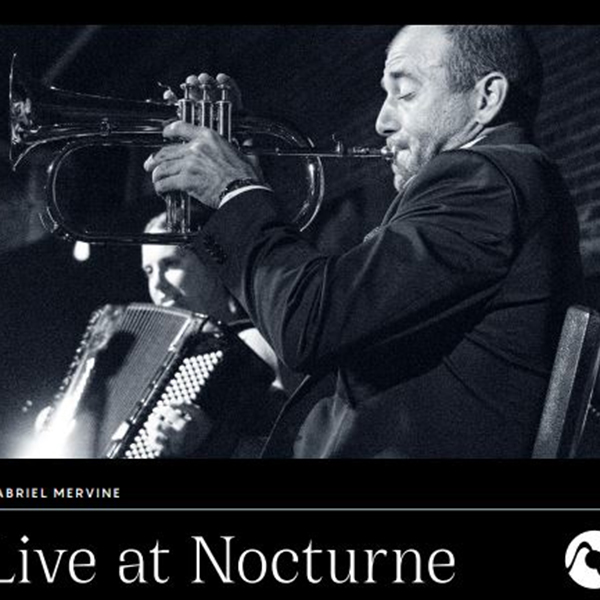
Gabriel Mervine: “Live at Nocturne”, feat. Gabriel Mervine – Trumpet, Alicia Jo Straka, Accordion, Patrick McDevitt, Bass, Braxton Kahn, Drums, 24-Bit, 176.4 kHz via Octave Records
This live recording of jazz trumpet virtuoso Gabriel Mervine was recorded in Denver, Colorado at the Nocturne Jazz and Supper Club. The recording, which was recorded in DSD256, is pristine and puts you right on the stage with the musicians while capturing the space of the room and the occasional sounds of glassware and voices that bring the club experience to life.
“Bossa Dorado” starts with the lush, rolling solo trumpet of Gabriel Mervine, and then an accordion joins in, followed by upright bass and drums. All the instruments are clearly defined in both locations on the stage and in the space around the musicians. Closing my eyes… I’m there. When the accordion has its solo, every resonance of the breathing of the bellows and the slight click of the keys is photographic in detail. When the upright bass has its solo, the vibration of the strings against the wood and the wood itself comes alive.

Michael Wollny Trio: “Weltentraum”, featuring Tim Lefebvre and Eric Schaefer, Hi-Res 24-Bit 96 kHz-Stereo, via Qobuz
Michael Wollny is a rising star on the German jazz scene, and this is his debut album from the Michael Wollny Trio, with Michael Wollny on piano, Eric Schaefer on drums, and Tim Lefebvre on bass.
The piece “Little Person” is a hauntingly beautiful song that was composed by Jon Brion for the movie “Synecdoche”, and the piano reminds me of another great film, “Merry Christmas, Mr. Lawrence”. Michael chooses to play it slow and meditative, and the brushwork on the drums is prominent as it is layered on, followed by upright bass and stunningly spare and brilliant drums with the cymbals showing the range of the crystalline highs of the headphones. The recording is exquisitely detailed and even the tiny tap, tap, tap of the drumsticks on the edge of the drums towards the end is heard, like faint morse code. I also listened to a stunning version of “Little Person” by the Norwegian Jazz vocalist Inger Marie Gundersen, whose velvety voice highlights how beautiful and poetic the lyrics to this song are. I recommend both versions highly.
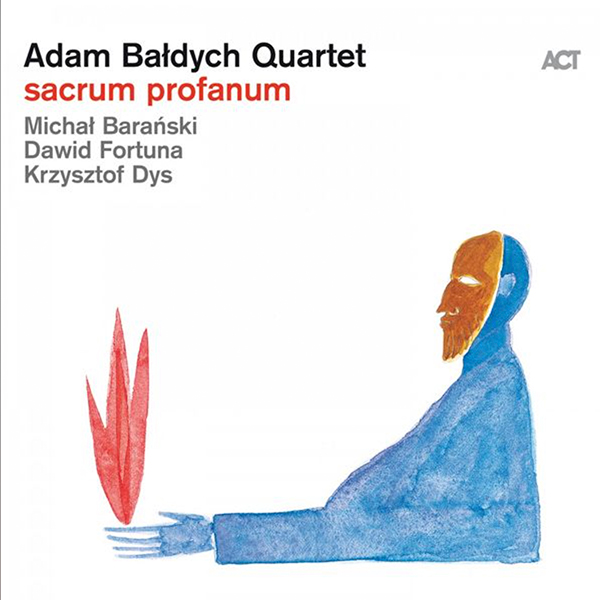
Adam Baldych Quartet: “Sacrum Profanum”, feat. Michal Barnanski, David Fortuna, and Krzystof Dys, Hi-Res 24-Bit via Qobuz
Adam Baldyh is a Polish violinist, composer, and music producer. This album is composed of 10 songs from both his compositions and classical music from such composers as Hildegard of Bingen, Thomas Tallis, and Gregorio Allegri. The piece “Spem in Alium” (Hope for any Other) is a 40-part Renaissance motet by Thomas Tallis. Originally written for eight choirs of five voices each. It is considered, by some, to be the greatest piece of early English music. This is, in my opinion, a master class in Renaissance/Jazz interpretation, and Adam’s Violin shimmers and vibrates when the piece opens and starts traditionally classical but soon moves through the centuries to a very modern jazz expression. The Susvara Unveiled placed me in the middle of the room, surrounded by the musicians. Both a stunning recording and presentation by the headphones.
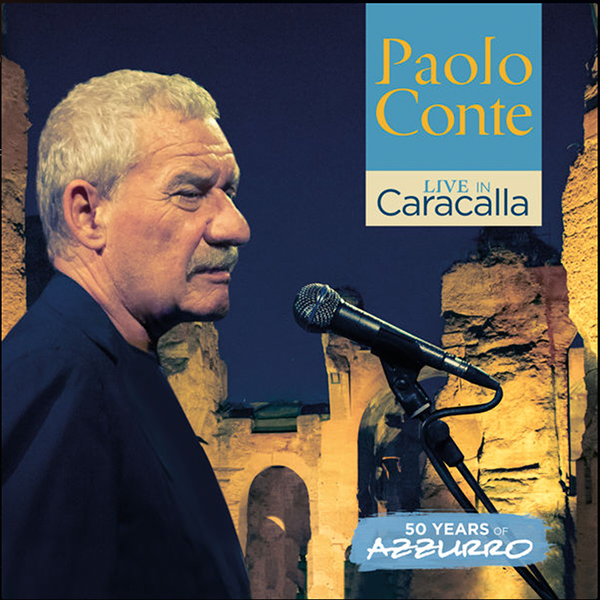
Going from the Renaissance to modern Italy is Paolo Conte: “Live in Caracalla: 50 Years of Azzurro”, 16-Bit CD Quality 44.1 kHz-Stereo, Qobuz
Ah, Paolo Conte. He makes me want to run away to Italy and find a smoke-filled music hall from the 40’s. A songwriter for decades he was encouraged to perform his own music. His persona is of a weary, aged jazz singer, who recites, more than sings his tales of life and love, both found and lost. He performs singing at the piano, and he plays with some of the most revered musicians in Europe. Most of his recordings are well- produced and are great for reviewing audio equipment, especially staging and dynamics. Not only that, but his music is also great fun, and I dare anyone to sit still while listening to it.
“Live in Caracalla: 50 years of Azzurro” is one of the most exciting live recordings I’ve heard in some time. It has the quality of a studio recording, and the microphones were perfectly placed with each musician, though I think the piano was recorded a little too loud and feels a bit out of balance with the other instruments. This is one of the recordings I was thinking about where I felt that I was transported to the middle of the performance. There is a xylophone playing to the right on the stage and it sounds so alive and “wooden” that I felt I could reach out and touch it. The same goes for every other player, and there are a bunch of them, and when they all get going it is wild, yet the Susvara Unveiled never lost either the dynamics and speed, but kept each player separate and easy to follow. What a treat that was, I heard things I’ve never noticed before, and it felt so alive, that maybe I don’t have to go to Italy after all…

Ray Lynch: “Best of, Volume One”, 16-Bit CD Quality 44.1 kHz- Stereo via Qobuz
In 1984, National Public Radio was swamped with questions about a song clip used between reports. That song was “Celestial Soda Pop” a joyful, bouncy electronic composition written, performed, and recorded by Platinum Awards artist Ray Lynch. It was a foray into a new kind of music for him as his background was classical guitar, lute, and Baroque music and he performed with The Renaissance Quartet in New York City. Ray didn’t consider these electronic compositions to be “new age music”, just an exploration of a new form of musical expression. I think that the pure tones of electronic music can highlight what headphones can deliver, and once again, listening to this old favorite was a delight. A friend was visiting recently, someone who doesn’t know much about headphones, or hi-fidelity audio. She asked about the headphones I was reviewing. She happens to be friends with Ray Lynch, so I played Celestial Soda Pop for her. Putting on the Susvara Unveiled, she was mildly curious and didn’t really expect much more than hearing an old song she had loved, but as she listened, she began to cry. She almost took the headphones off; she was so startled by what she was hearing. Her comment was that in all the many times over the years that she had listened to that piece, she felt like she was hearing, not only things she had never heard before but the soul of the music for the first time. This was poignant as she and many of her friends who live in Northern California in Lake County lost their homes in the 2015 “Valley Fire”, including Ray who had his home and studio in the same neighborhood. He lost everything, including his studio where he kept his original tapes, instruments, and recording equipment. According to my friend, Ray hasn’t returned to writing or recording music.
Secrets Sponsor
I’m concerned that my praise might be a bit over the top. My other concern is someone may be thinking “Is there a headphone this woman doesn’t love?”. In truth, I have been fortunate to hear some of the best and, yes, I do tend to love most of them to one degree or another. But the time I’ve spent with both the HIFIMAN Susvara Unveiled, and the EF1000 DAC has been a very special experience.
- Transportive three-dimensional abilities to take you into the music.
- Natural, life-like reproduction of voices and instruments, like a hi-res photo.
- Good range of head size adjustments.
- Very comfortable for hours of listening.
- Reveals all a recording has to offer (good and bad…).
- Precise placement of every instrument and voice, if the sound is large and wide, that is how you will hear it, but if the music is intimate and close, that is how it will sound.
- Fast, transparent, and dynamic, completely open.
- Very good bass, strong mids, and smooth highs.
- Some reassurance that these aren’t as vulnerable as they seem.
- Though improved, I wish they were easier to drive; choice of amps and DACS will matter.
- It would be great if some of the innovations could be passed on to newer versions of other HIFIMAN headphones.
I’ve had over a month to really explore what music can sound like when listened to at this level, and I’m a bit sad, knowing I must go back to reality soon.
The world of TOTL headphones has grown crowded in the last few years, there are models for every sound preference, and some may do one thing better than the Susvara Unveiled, but I don’t think there is another single model that does as much so well (at least dynamic driver and planar magnetic headphones; electrostatic are in their own category).
I’m curious to see where Dr. Fang Bian’s vision and push for innovation takes him next, and, given the rather daring design choice for this headphone, I have a feeling it is going to get interesting.


